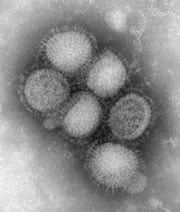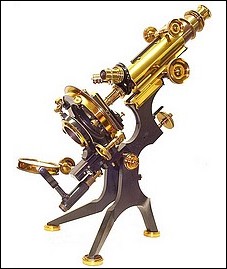
So, last week I talked about an amazing
collection of microscopes at the University of Arizona College of Optical Sciences. This week, I decided to share my collection of microscopes with you. Again, they are not so much antique as they are vintage. The smaller one (right)was likely a model for school children in the 1940's or 50's. It came in a neat wooden box containing a few tools, a slide, and an old catalog from the company. Here (left) is an image I took with it of a piece of mica that i found in some potting soil.

The larger one (bottom right) with the odd looking bar is an old Carl Zeiss model (#316645 if you're interested). I consulted with a director of the Zeiss historical society about what it is and what it's function was and he thinks that it was measuring tool designed by Zeiss for use in the Zeiss factory for a quality.
Both of these microscopes were rather affordable. Probably because they were both extremely dirty when I bought them.

They were obviously well used, especially the Zeiss. I spent several pleasant evenings in harsh light with a long drawn out whiskey, carefully removing every screw, opening every objective and condenser, polishing every lens, and loving every minute of it before putting it all back together. By the end, they look more or less brand new. In the Zeiss, I found a protractor in the eye-piece that I carefully aligned into the CORRECT position (the factory apparently neglected to do so in manufacturing). I also found a small prism in there.
Click the images to enlarge them.
 Though I may be a little late blogging about this, H1N1 (swine flu) has some potential to stage a major comeback during the upcoming flu season. So, perhaps I'm early.
Though I may be a little late blogging about this, H1N1 (swine flu) has some potential to stage a major comeback during the upcoming flu season. So, perhaps I'm early.


-13b.png)
-13.png)






















